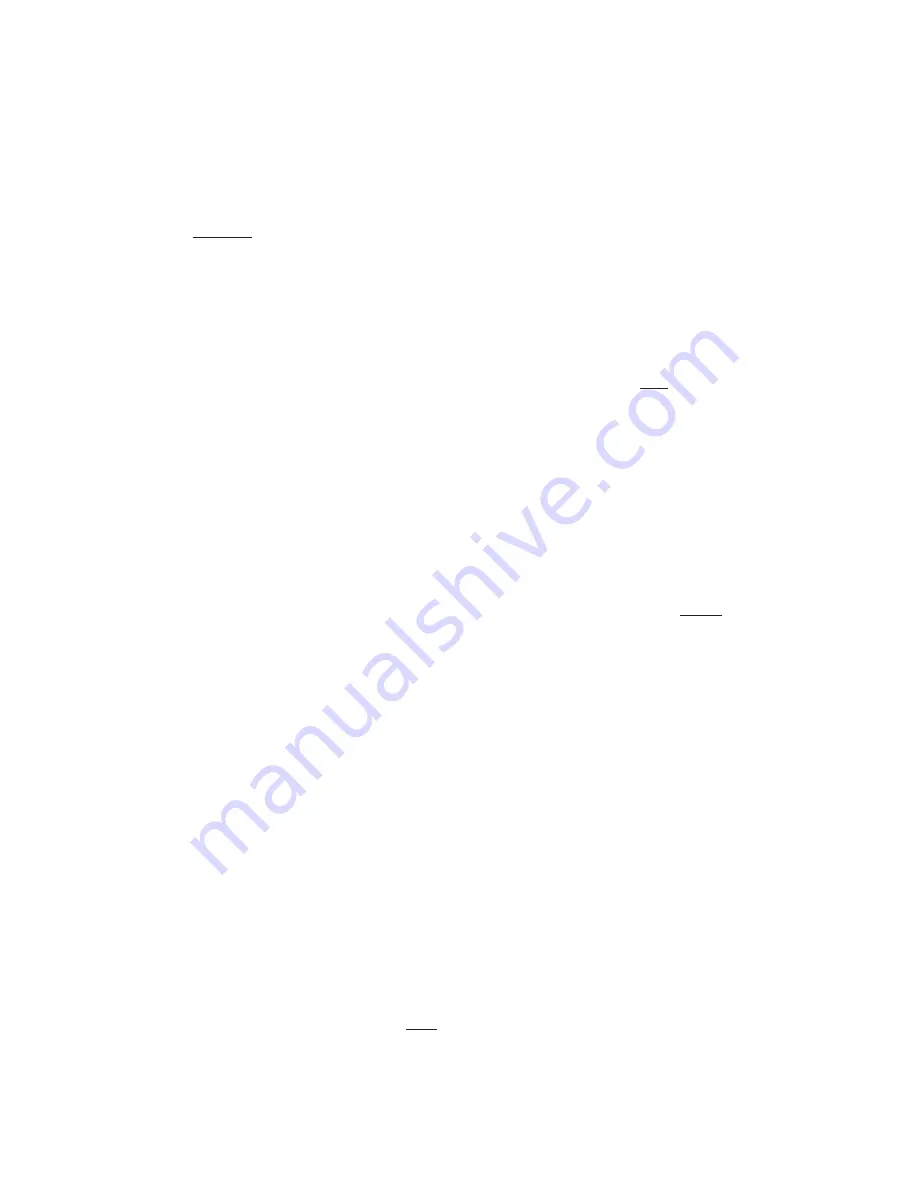
IOM-SLR-2
7
LU BRI CANT, OR HEAVY FORCE
TO EN GAGE THE CAP SEAL (27.1)
INTO THE CAGE (19). Do not press
in wards on the Cap Seal (27.1) too
much or the cap seal (27.1) may slide
out of its groove or the cap seal (27.1)
can be damaged.
c. Type
UC:
1. Stretch u-cup seal (27.3) over lower
circumference of guide bear ing (13),
taking care not to “cut” u-cup seal
(27.3) on the protruding shelf that is
part of the guide bear ing's (13) groove.
Ensure that the u-cup seal (27.3) is
oriented with the center-open-down-
wards as shown in Figure 1, as the
u-cup seal (27.3) depends upon the
P1-Inlet Pres sure to pressure activate
the seal for proper sealing action.
2. Position guide bearing (13) over and
into upper end of cage (19) until the
cap seal (27.1) edge touches the
upper lip of the cage. While gently ap-
plying force to press the guide bearing
(13) into the cage (19), simultaneously
use fingers to lightly press the u-cup
seal (27.3) inwards into the groove of
the guide bearing (13) until the u-cup
seal (27.3) “slips into” the cage (19).
DO NOT USE TOOLS, LUBRICANT,
OR HEAVY FORCE TO ENGAGE
THE U-CUP SEAL (27.3) INTO THE
CAGE (19).
4. Place properly oriented seat ring (21) onto
the shoul der at the lower end of cage (19).
5. Place new o-ring lower stem seal (14.3) into
groove of valve plug (20).
6. Insert valve plug (20) upwards through lower
end of cage (19) and through the center hole
in guide bearing (13), also capturing the wiper
washer (17.1) and wiper seal (16), if supplied.
Hold plug (20) and cage (19) together.
7. Place an oversized nut or stack of wash ers,
the same approximate height of the up per
diaphragm plate (8) and the lower diaphragm
plate (10), over the upper end of valve plug
(20) and temporarily secure with diaphragm
lock nut (7), manually tightened. Do NOT al-
low valve plug (20) to rotate against seat ring
(21) during tightening.
8. This completes ITA preliminary reassembly.
F. Main Regulator Reassembly:
1. Place body (23) in a vise.
2. Reinstall internal sensing drilled plug (33) with
compatible thread sealant.
3. Insert the lower piston spring (22) into the
body (23), if supplied.
4. Fit the o-ring cage seal (15) into its body (23)
groove.
5. With the ITA held manually in the closed po si-
tion, insert ITA into body (23).
6. Properly align all three cage bolt (18) holes
as there is only one circumferential location
pos si ble for this align ment. If a lower piston
spring (22) is used, apply downward force to
the top of the cage (19) until the ITA is lowered
suf fi cient ly to engage the cage bolts (18) into
the body (23). Engage all of the cage bolts
(18), then evenly screw in the cage bolts in
one-half revolution increments to pull down
the ITA evenly, taking care NOT TO “AN GLE”
the ITA in the BODY. Torque the cage bolts
(18) to 13-15 ft-lbs (17.6-20.3 N-m).
7. For the following steps a.– g., the upper end
of valve plug (20) MUST be manually held up
if unit is not supplied with lower piston spring
(22).
a. Remove temporarily installed diaphragm
lock nut (7) and spacers of previous Step
E.7 this Section.
b. Place new o-ring middle stem seal (14.2)
into groove of guide bearing (13) upper
surface.
c. Position lower diaphragm plate (10) over
upper end of plug (20) with tongue and
groove “groove” on up per side.
d. Place new o-ring upper stem seal (14.1)
over upper end of valve plug (20).
e. Place diaphragm (9) over end of valve
plug (20).
f. Place upper diaphragm plate (8) over
upper end of plug (20) with tongue and
groove “ridge” on lower side.
g. Place lubricant on valve plug (20) thread ed
end. Engage diaphragm lock nut (7) with
upper end of valve stem (20) as far as
possible manually.
h. Place a wrench on diaphragm lock nut (7)
and a torque wrench on the upper end
of valve plug (20). Hold torque wrench
sta tion ary and rotate diaphragm lock nut
(7) to the following torque values:




































